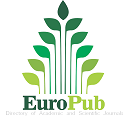Profil Hormon Progesteron dan Gen Fekunditas terhadap Sifat Kembar Kambing PE Betina Calon Induk
Keywords:
body score, Etawah-grade does, fecundity genes, head score, progesterone profile
Abstract
Etawah-grade goat is a graded up line between kacang and etawah goats, which well adapted to Indonesia’s humid tropical climate. The good reproductive trait of Etawah-grade does are inherited from kacang goat (prolific goat). This study used six heads of Etawah-grade does at 1–2 years old (I1 dental condition). IPB University. The body variables were withers height, hip height, body length, chest width, chest depth, thurl width, rump length, chest girth, and cannon circumference, whereas for head variables were acrocranion–prosthion, basion–prosthion, lower jaw length, head height, tuber facial left-right, nasion–rhinion, entorbitale left-right, euryon left-right, supraorbitale left-right. Body score and head score were obtained from Principal Component Analysis (PCA). PCR-RFLP technique was used to determine genotypes of fecundity genes BMP15 (exon 1), BMPR1B (exon 1), KISS1 (exon 1) and KISS1 (intron 1) with restriction enzymes AluI (AG|CT), SduI (GDGCH|C), BsrI (ACTGG|) and MwoI (GCCTAAG|TAGC), respectively. Progesterone leves were measured by EIA (enzyme immuno assay). The results showed that the association between crude fat consumption and progesterone profile was found in this study, but it was not related to twin births with certain genotypes of gene fecundity BMP15 (exon 1), BMPR1B (exon 1), KISS1 (exon 1) and KISS1 (intron 1). The progesterone profile during the pregnancy period did not correlate to their body size and head size.Downloads
Download data is not yet available.
Published
2019-05-24
How to Cite
MulyonoR. H., SumantriC., NoorR. R., JakariaJ., & AstutiD. A. (2019). Profil Hormon Progesteron dan Gen Fekunditas terhadap Sifat Kembar Kambing PE Betina Calon Induk. Jurnal Ilmu Produksi Dan Teknologi Hasil Peternakan, 6(1), 19-26. Retrieved from https://journal.ipb.ac.id/index.php/ipthp/article/view/26197
Section
Articles















